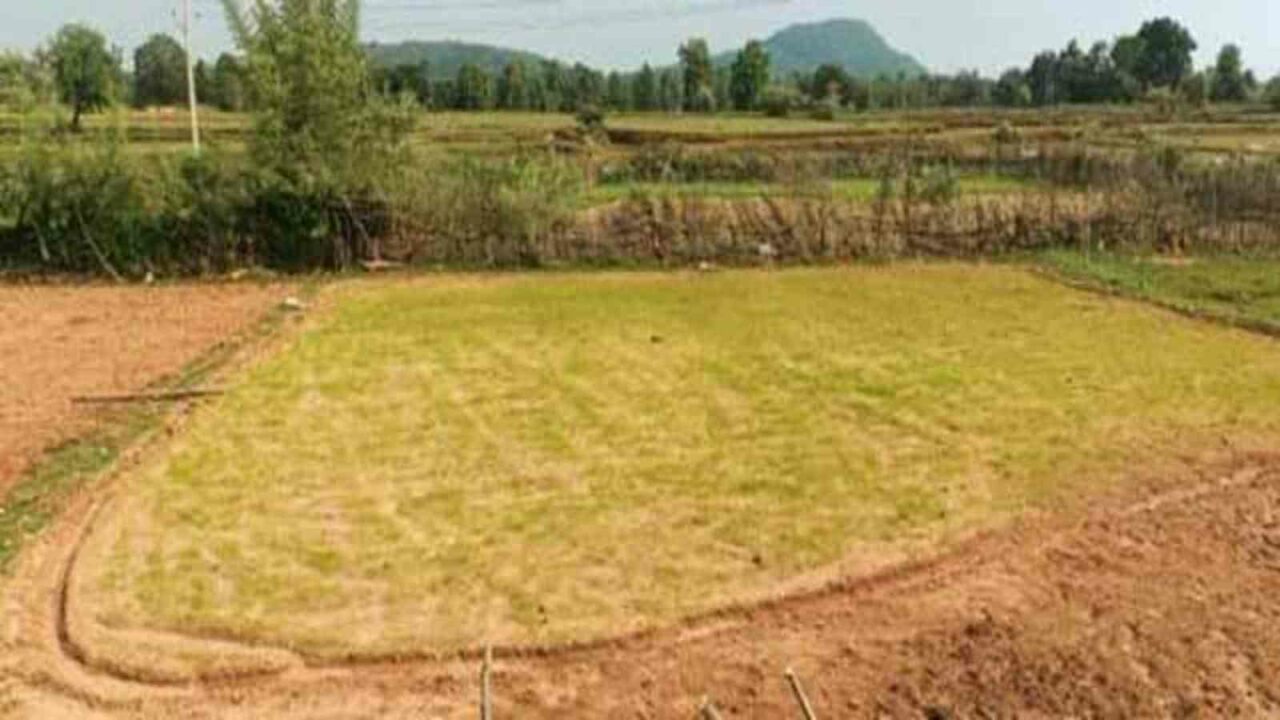Jharkhand has a 51 percent rainfall deficit this monsoon so far and is heading towards an early season drought, experts and government officials said.
With monsoon rains giving the state the miss during the peak sowing season, the sowing of paddy is less than ten percent so far, they said.
The ideal period of sowing paddy has ended on July 20, the experts said.
In Jharkhand, the cultivators generally prepare their farm fields for sowing from June 15. The full-fledged sowing activity begins on July 1 and continues till July 31. The ideal sowing period for paddy is, however, between July 1 and July 20, experts said.
Jharkhand IAS officer Singhal was paid commission by junior staff from MGNREGA fund, claims ED
Delayed and scanty rainfall in the early months of the monsoon has been plaguing the state for the past few years and farmers have been forced to carry on the sowing activity till August 15. This extended sowing has naturally hampered yield, they said.
“The situation is alarming for paddy cultivation. If Jharkhand does not get adequate rainfall in the next five days, the yield will get hampered majorly. The ideal sowing period for paddy has almost been over in Jharkhand. However, the situation is not bad for upland crops such as pulses and maize,” P K Singh, a senior agro scientist at Birsa Agriculture University (BAU) here told PTI, The situation vis a vis sowing can be gauged from the district-wise Kharif coverage data of the state agriculture department, which said that paddy sowing could not be started in 13 of the 24 districts of the state till Wednesday. Paddy, which is the main crop of the season, sowing was done in 1.68 lakh hectares or a mere 9.56 percent of the targeted 18 lakh hectares till July 20.
Khiri Mahto, a farmer in Ranchi’s Rahe block told PTI that paddy seedlings are drying up in the nurseries.
“We are not able to transplant the seedlings in the absence of sufficient water in the fields. We are worried as the sowing season has almost ended,” he said.
Jharkhand sub-inspector mowed down to death during vehicle check in Ranchi
Ranchi district has achieved a mere 1.5 percent sowing coverage till Wednesday.
A rough calculation suggests that Jharkhand experienced drought if it receives deficient rainfall in June and July. Jharkhand faced drought years in 2013, 2018, and 2019. In 2020, 55 blocks across seven districts had been declared drought affected.
In 2013, Jharkhand received eight percent deficient rainfall in June and 37 percent in July. In 2018, the state faced a 35 percent rain shortfall in June and 18 percent in July. In 2019, the state experienced a 55 percent rain shortfall in June and 25 percent in July.
This year, the state has faced a 49 percent rain shortfall in June and a 51 percent deficit till July 20. Jharkhand received 192.9mm of rainfall from June 1 to July 20 against the normal rainfall of 391.8mm rainfall during the period. Six districts of the state are facing above 70 percent rain shortfall with Sahibganj recording the highest rain deficit of 82 percent till July 20.
Jharkhand man on Shrikhand Mahadev pilgrimage in Himachal Pradesh dies
“Monsoon has been weak over Jharkhand till now. We are hoping that the state will receive good rainfall during the next five days as cyclonic circulation is prevailing over Jharkhand. This expected rainfall may reduce the shortfall gap,” Abhishek Anand, in charge of Ranchi meteorological center, told PTI.
State Agriculture Minister Badal Patralekh has called a meeting on Thursday to review the situation.
The agriculture department has meanwhile started implementing its contingency plan to deal with the situation.
State agriculture director Nisha Oraon Singhmar told PTI said the department has given direction to private dealers to stop the sale of long-duration varieties immediately and encourage short-duration varieties.
“We have also asked district agriculture officers to organize Krishak Goshtis (farmer groups) to encourage selected varieties and special techniques for growing short-duration seed varieties. Emphasis is being given on direct seeding of rice and the system of rice intensification methods,” Singhmar said.
The coverage of other Kharif crops is a little encouraging. The maize sowing coverage to date is 48%, pulses 24.26%, oil seeds 32.24%, and coarse cereals 11.93%, according to the coverage data.
“We held a meeting on Wednesday with district agriculture officers (DAOs) of 16 districts where rainfall deficit is more than 50%. Earlier, on July 15, we had a meeting with eight districts where rain shortfall is between 30% and 50%,” Singhmar added.


















